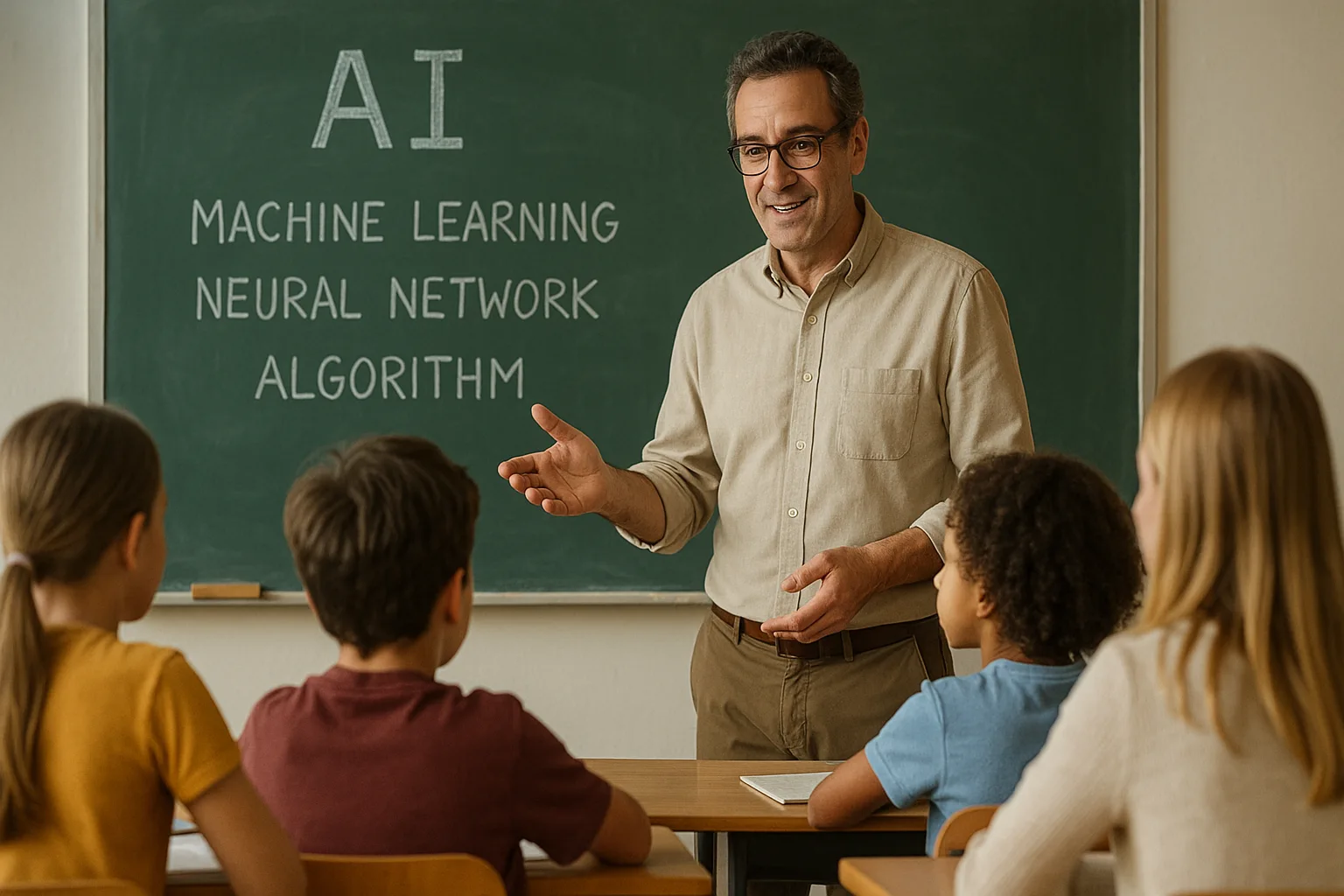Artificial Intelligence (AI) is becoming more and more part of our daily lives — from smartphones to cars, and now, even classrooms. But many people, especially educators, still have doubts and fears about how AI works and how it will affect education. That’s totally normal. In fact, many of these concerns come from misunderstandings. In this article, we’re going to break down the most common misconceptions about AI in education, using simple words, relatable examples, and a friendly approach.
Let’s clear up these doubts together.
What Are the Common Misconceptions About AI in Education?
AI is often misunderstood. Because it sounds technical or futuristic, people may think it’s too complicated, too dangerous, or just another passing trend. So, what are the most common myths we hear from teachers and parents? And more importantly, what’s the truth behind them?
“AI Will Replace Teachers” – Not True at All!
Let’s begin by addressing the biggest fear right away: “AI will take over and replace teachers.” This simply isn’t true.
Imagine you’re using a calculator. Does it replace your ability to do math? No, it just helps you work faster. The same goes for AI in schools. AI is here to support teachers, not take their place. It can help grade assignments, track student progress, or even suggest personalized exercises — but it can’t replace the love, understanding, and inspiration that a real teacher provides.
AI might help with tasks, but it will never care the way a teacher does.
“AI Is Too Complicated for Classrooms” – It’s Simpler Than You Think
Another common belief is that AI is only for tech experts. But guess what? You probably already use it without realizing.
Have you ever used YouTube’s auto-caption? Or let Google suggest words when typing an email? That’s AI! In the classroom, there are AI tools that are just as easy to use, like platforms that help students with reading, spelling, or language learning.
You don’t need to be a programmer. You just need to be curious and open to trying.
“AI Is Just a Trend That Will Disappear” – Actually, It’s Growing Fast
Some teachers think AI is just the “technology of the moment” and will fade away soon. But everything shows the opposite.
AI is growing in healthcare, transportation, and yes, education. The more we understand and use it wisely, the more benefits we’ll see. Ignoring it might mean missing out on great opportunities to make learning easier and more personalized.
It’s not a passing wave — it’s part of the future.
👉 Discover the truths behind common myths about AI in education and learn how it can enhance teaching and learning experiences.
“Students Will Cheat More with AI” – There’s Another Side to It
It’s true that tools like ChatGPT can write texts or solve problems. But that doesn’t mean students will automatically cheat.
Just like calculators didn’t end math learning, AI won’t end critical thinking. In fact, it can encourage deeper questions, creativity, and new ways to learn. It’s up to teachers to guide how students use AI — turning it into a learning ally, not a shortcut.
Instead of banning AI, we can teach students how to use it responsibly.
“AI Treats All Students the Same” – Actually, It Can Personalize Learning
Many think AI gives the same content to everyone. But one of its biggest strengths is doing the opposite!
With AI, learning platforms can adjust to each student’s pace, preferences, and needs. For example, a reading app might repeat words a child struggles with, or a math tool might offer more practice when a student makes mistakes.
It’s like having a personal tutor — one that never gets tired.

“Using AI Means Losing the Human Touch” – Not If Used Wisely
Some people fear that with so much tech, education will lose its heart. That’s a valid concern. But it doesn’t have to be that way.
When used right, AI can actually give teachers more time to do what they love: connect with students, inspire them, and support them emotionally. If AI takes care of repetitive tasks, teachers have more space for creativity and human interaction.
It’s all about balance — not replacing, but enhancing.
“AI Makes Decisions Without Explanation” – Teachers Stay in Control
There’s also worry that AI might make decisions we can’t understand. That’s why it’s important to use educational tools that are transparent and give control back to teachers.
A good AI platform should show why it made a suggestion, and allow teachers to adjust it. The goal is to empower, not confuse.
Teachers remain the decision-makers — AI just brings more tools to their toolbox.
“AI Will Make Teachers Obsolete” – Let’s Repeat: Never!
We’ve said it before, but it’s worth saying again. AI is not here to replace educators. No machine can replace the human bond formed between a teacher and student.
Think of AI as a bicycle. It can take you further, faster — but you’re still the one pedaling. Teachers guide the learning journey. AI just helps make the ride smoother.
Real Examples of AI in the Classroom
Let’s look at how AI is already helping teachers and students in practical ways:
- Speech-to-text tools help students with writing difficulties express themselves.
- Reading apps that adapt to the student’s level, like Imagine Learning.
- AI feedback platforms that check grammar and provide suggestions in real time.
- Data dashboards that help teachers see which students need extra help.
These aren’t science fiction — they’re happening right now, in classrooms just like yours.
Key Points About Common Misconceptions About AI in Education
- AI is not here to replace teachers — it supports them.
- Many AI tools are already simple and part of everyday life.
- AI is not a passing trend — it’s becoming more important in education.
- Students can learn to use AI ethically and creatively.
- AI can personalize learning based on individual student needs.
- When used wisely, AI frees time for more human connection.
- Teachers always stay in control of AI-based decisions.
- Real examples of AI tools are already improving classrooms.
Conclusion
AI in education brings up many doubts — and that’s okay. New things often make us feel uncertain. But once we understand what AI really is (and what it isn’t), we can use it to make learning better, not scarier.
You, as a teacher, don’t need to be a tech wizard. You just need to be open to discovering how AI can help you do what you already do best — educate with care, love, and purpose.
Have you had any experience with AI in your classroom or school? Share your thoughts in the comments — your experience can help others too!

